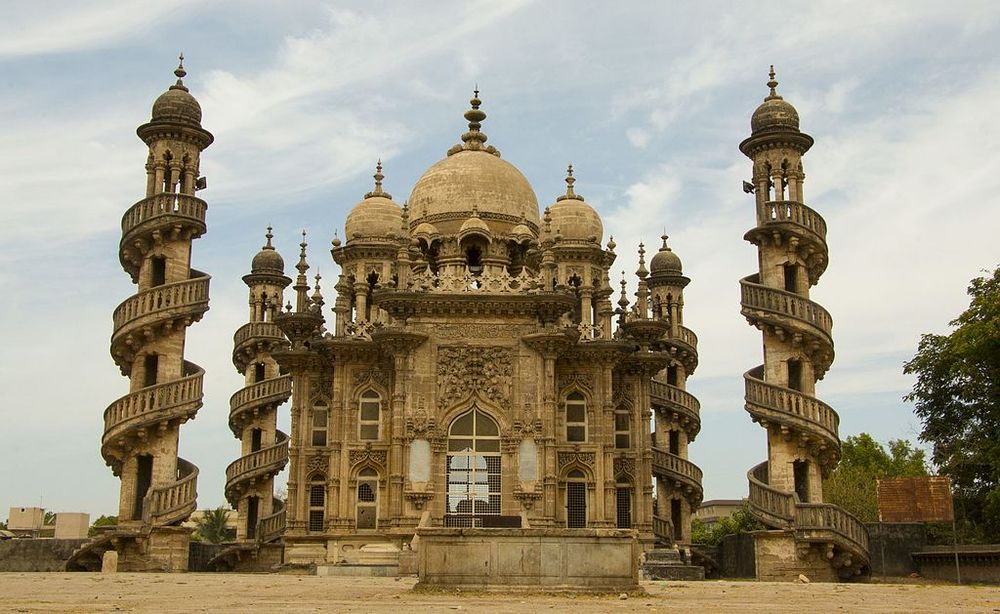In Junagadh, Gujarat, the confluence of cultural influences in India epitomises in the form of an overlooked monument. Mahabat Maqbara—an epic-looking mausoleum of the 19th century—stands in what was once a no-man’s land. From eloquent carvings to spiral staircases, each element of the building displays a unique testimony to various architectural styles. But for all its glory, not many people know about the mausoleum, and even fewer about its history.

Photo: Gopikapadia/Wikimedia
The History of Mahabat Maqbara
The permanent resting place of the Nawabs of Junagadh, Mahabat Maqbara was built over the remains of Junagadh Nawab Mahabat Khan Wazir Bahaduddinbhai Hasainbhai, a chief noble in his court. It was Mahabat Khan II who began its construction in 1878, but Bahadur Khan III who finished the job in 1892. During these years, elements of European, Gothic and India-Islamic architecture found their way into the design. Soon, Mahabat Maqbara was standing as a revered example of blended influences like no other.
The location of the mausoleum added to its charm. When India became a British protectorate in 1808, the colonisers divided Saurashtra into 100 princely states. Junagadh was one of them. However, what is known as Junagadh’s old town today was back then left out of all states as a neutral territory not controlled by anyone. This was where the monument was built.

Photo: Gsuruchi06/Wikimedia
By 1947 as India was emerging as an independent country, Mahabat Khan III demanded for Junagadh to join with Pakistan. But a revolting public and a pressuring government led the Nawab to flee to Pakistan alone, leaving Junagadh to reunite with Indian territory.
Indo-Islamic onion domes top this stunning monument, which continues to stand on a dusty track in the middle of the city. The sky-reaching tops give way to silver columns and floor-to ceiling French windows—elements that were highly characteristic of European styling. The Jama Masjid, erected next to the mausoleum with a likeness to the Taj Mahal, stands out for an unusual quality. Each of the four minarets of the mosque have a staircase spiraling around them. This look is especially reminiscent of Gothic architecture, unlike anything seen across the country.
In modern India, the Archaeological Survey of India (ASI) took Mahabat Maqbara under its purview. But the monument has survived mostly due to its creator’s generosity. The Nawab who had kept aside a bank of Rs8,000 per year, which is handed to the locals annually for the upkeep of the mausoleum.

Photo: Dhairyapambhar/Wikimedia

Photo: Evgeni Zotov/Flickr

Photo: Saurabh Chatterjee/Flickr

Photo: Saurabh Chatterjee/Flickr
References:
# Atlas Obscura
# Times Travel
# Indian Express












Comments
Post a Comment